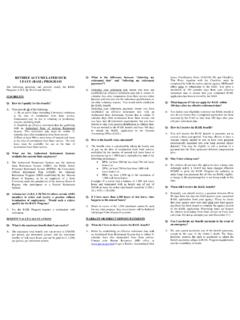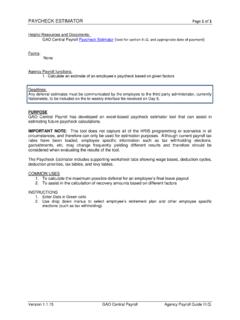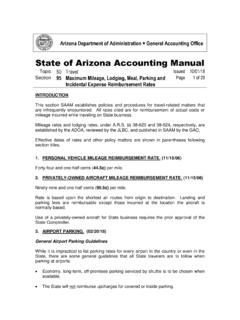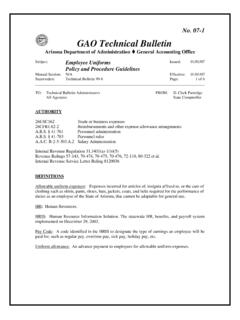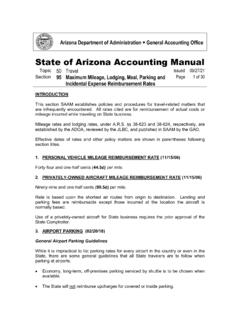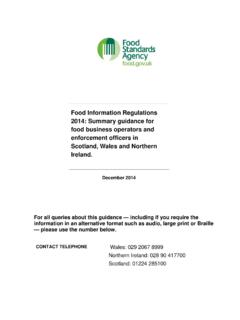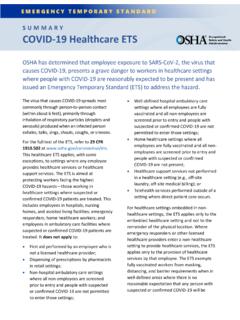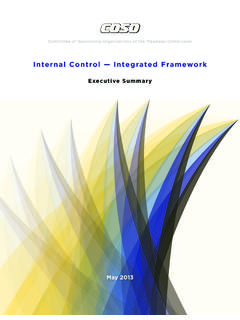Transcription of Corrective Action Plan and Summary Schedule of Prior Year ...
1 Corrective Action Plan and Summary Schedule of Prior Year Audit Findings guidance for State Agencies Prepared by General Accounting Office 1/7 Purpose of this document: To provide guidance to State agencies on responding to current and Prior year Single Audit findings. Definitions: Code of Federal Regulations (CFR) is the codification of the general and permanent rules published in the Federal Register by the departments and agencies of the Federal Government produced by the Office of the Federal Register (OFR) and the Government Publishing Office. Corrective Action means Action taken by the auditee that: a) Corrects identified deficiencies; b) Produces recommended improvements; or c) Demonstrates that audit findings are either invalid or do not warrant auditee Action . Summary Schedule of Prior Audit Finding (SSPAF) - reports the status of all audit findings included in the Prior audit's Schedule of findings and questioned costs and the audit findings reported in the Prior audit's Summary Schedule of Prior audit findings except audit findings listed as corrected or no longer valid.
2 Management Decision means the evaluation by the Federal awarding agency or pass-through entity of the audit findings and Corrective Action plan and the issuance of a written decision to the auditee as to what Corrective Action is necessary. Federal Audit Clearinghouse (FAC) means the clearinghouse designated by OMB as the repository of record where non-Federal entities are required to transmit the reporting packages required by Subpart F- Audit Requirements of 2 CFR 200. Corrective Action Plan: Per 2 CFR (c) an auditee must prepare a Corrective Action plan when the audit is completed for each audit finding in the current year s audit report. The auditee must proceed with Corrective Action as soon as possible, beginning no later than upon receipt of the auditor s report ( (d)). Required elements of Corrective Action plan: Audit Finding Number: This is the number assigned by the auditor State Agency: The official name of the State agency Responsible Person, Title: The name of the person who is responsible for the resolution of the finding and that person s official title Anticipated Completion Date: This is the planned date of resolution; it should be in the format 01/30/2020 Agency Response: Concur or Do Not Concur Corrective Action Plan and Summary Schedule of Prior Year Audit Findings guidance for State Agencies Prepared by General Accounting Office 2/7 **Note** If an agency does not agree with an audit finding they should contact GAO as soon as possible, even if the actual finding hasn t been received.
3 Auditors typically provide advance notice that they anticipate a finding long before it is received. Corrective Action Plan: Narrative of the planned Corrective Action . As you prepare to write a response consider the following: Objective Preparing a plan to correct the finding. Audience As part of the management decision process Federal agencies will review Corrective Action plans to verify the planned Action will prevent reoccurrence of similar findings and recover questioned costs. The Federal grantor is the audience. o What does the Federal grantor need to know will be done? What are the recommendations of the audit? o Generally, if the recommendations are implemented the finding should be resolved. o What are the steps to implement the recommendations? What are the anticipated hurdles? What is the required level of effort to resolve?
4 What is a realistic timeframe to completion? o Correcting noncompliance can be a lengthy process, measured in years rather than months. Federal grantors and auditors will be following up later to ensure the Corrective Action plan has been implemented as indicated, is it measurable? Federal findings identify the area of noncompliance. Read the related section of the OMB Compliance Supplement Part 3 for additional information on how to comply with that area Over the last five single audits, an average of 63% of recommendations involved creating, reviewing or enforcing policies and procedures. Having written policies and procedures will help reduce the overall number of findings. Common issues with responses: o Over-promise If a law change is required, ensure research is done on how that would be achieved and the probability it can be done o Under-promise Federal grantors review the plans, if the plan does not adequately address the issue, the grantor will require additional actions.
5 Additionally, the finding will not be resolved and occur again. o Unrealistic timeframe Resolutions that involve outside vendors etc. will likely take a lot of planning, more people involved, and external processes. Even internal corrections can be difficult to complete timely as it may require coordination between multiple departments. It is important to do the legwork before committing to a resolution timeframe. If an anticipated completion date is given and not met, additional explanations are required. o Does not address the issue The response should be concise and address the actual issue/cause of the finding. If the issue is there are no desktop procedures, the plan should be getting the procedures written and distributed. Corrective Action Plan and Summary Schedule of Prior Year Audit Findings guidance for State Agencies Prepared by General Accounting Office 3/7 o Too much detail The response should address the required elements and be as concise as possible.
6 Again, if the issue is there are no desktop procedures, the plan should be getting the procedures written and distributed. The Federal grantor does not need to know the location of the procedures. When the audit team follows up they may ask that question, but that is part of the audit work, do not include it in the response. Directions for Writing a Corrective Action Plan 1. Indicate the strategy the specific means, method, or approach to solving the identified problem(s). 2. List the major actions that must be taken to implement the strategy. They should be listed in order of completion. In articulating the actions, stay focused on the big picture, naming only the most significant to achieve resolution. However, the owner of a specific Action step may wish to add detail to the internal Action plan to guide his or her particular work.
7 An optional internal Action plan document provided below. 3. The actions should be written such that they indicate the measures of implementation that tell when the Action step or strategy is fully realized or carried out. Summary Schedule of Prior Audit Findings: Per 2 CFR (b) The Summary Schedule of Prior audit findings (SSPAF) must report the status of all findings included in the Prior audit s Schedule of findings and questioned costs in addition to audit findings reported in the Prior audit s SSPAFs if they were not listed as fully corrected or no longer valid. Required elements of a Summary Schedule of Prior audit findings: Audit Finding Number: This is the number assigned by the auditor State Agency: The official name of the State agency Status: Fully Corrected, Partially Corrected, Not Corrected, No Longer Valid Reason for Findings Recurrence: Explanation of why the finding recurred Corrective Action Taken to Date: Describe what Corrective actions have been taken Remaining Corrective Actions: Describe what Corrective actions remain Significant Differences from Previously Reported Corrective Action Plan: If applicable, explain why Corrective Action taken is significantly different from Corrective Action previously reported.
8 As you prepare to compile the SSPAF consider the following: Objective Providing a status update of the plan, including any changes to the plan. Audience Federal agencies will review as part of their follow up of audit findings Corrective Action Plan and Summary Schedule of Prior Year Audit Findings guidance for State Agencies Prepared by General Accounting Office 4/7 What was the Corrective Action plan? o What progress has been made on the plan? o What is left to be done? A well-planned CAP will lead to an easy Summary of status as of 6/30. An example document to use for planning and tracking status is below. Is the plan on target to complete by anticipated date? o Correcting noncompliance can be a lengthy process, measured in years rather than months. Common issues with Summary schedules of Prior audit findings: o Does not include required information The elements required in the SSPAF is dictated by the Code of Federal Regulations, GAO and the auditors will be reviewing to ensure required information is included.
9 It causes delays in the Single Audit process when required elements are not included initially. o Too much detail The Federal grantor is reviewing this information to determine the status of the Corrective Action . Concise responses are ideal, what was the step and has it been implemented or is it in progress? o Status is incorrect see below Status considerations Fully corrected means that the Corrective Action is fully implemented as of 6/30 of the fiscal year under audit. Partially corrected means that Corrective actions are in progress as of 6/30 of the fiscal year under audit. Not corrected means that no Corrective actions have occurred as of 6/30 of the fiscal year under audit. No longer valid means that: 1. Two years have passed since the audit report in which the finding occurred was submitted to the FAC 2. The Federal agency or pass-through entity is not currently following up with the auditee on the audit finding AND 3.
10 A management decision was not issued Corrective Action Plan and Summary Schedule of Prior Year Audit Findings guidance for State Agencies Prepared by General Accounting Office 5/7 Example finding: Example Corrective Action plan: Finding: 2017-101 Agency: Department Name of contact person and title: D. Clark Partridge, State Comptroller Anticipated completion date: 08/30/2019 Agency s response: Concur Finding: 2018-101 CFDA number and name: Award numbers and years: 2017 XYZ, 2017 Federal agency: Department of Health and Human Services Compliance Requirement: Subrecipient Monitoring Questioned Costs: None Criteria: In accordance with 2 CFR (f) pass-through entities should ensure that a subrecipient expending $750,000 or more in federal awards during the subrecipient s fiscal year has met the audit requirements for that fiscal year.



